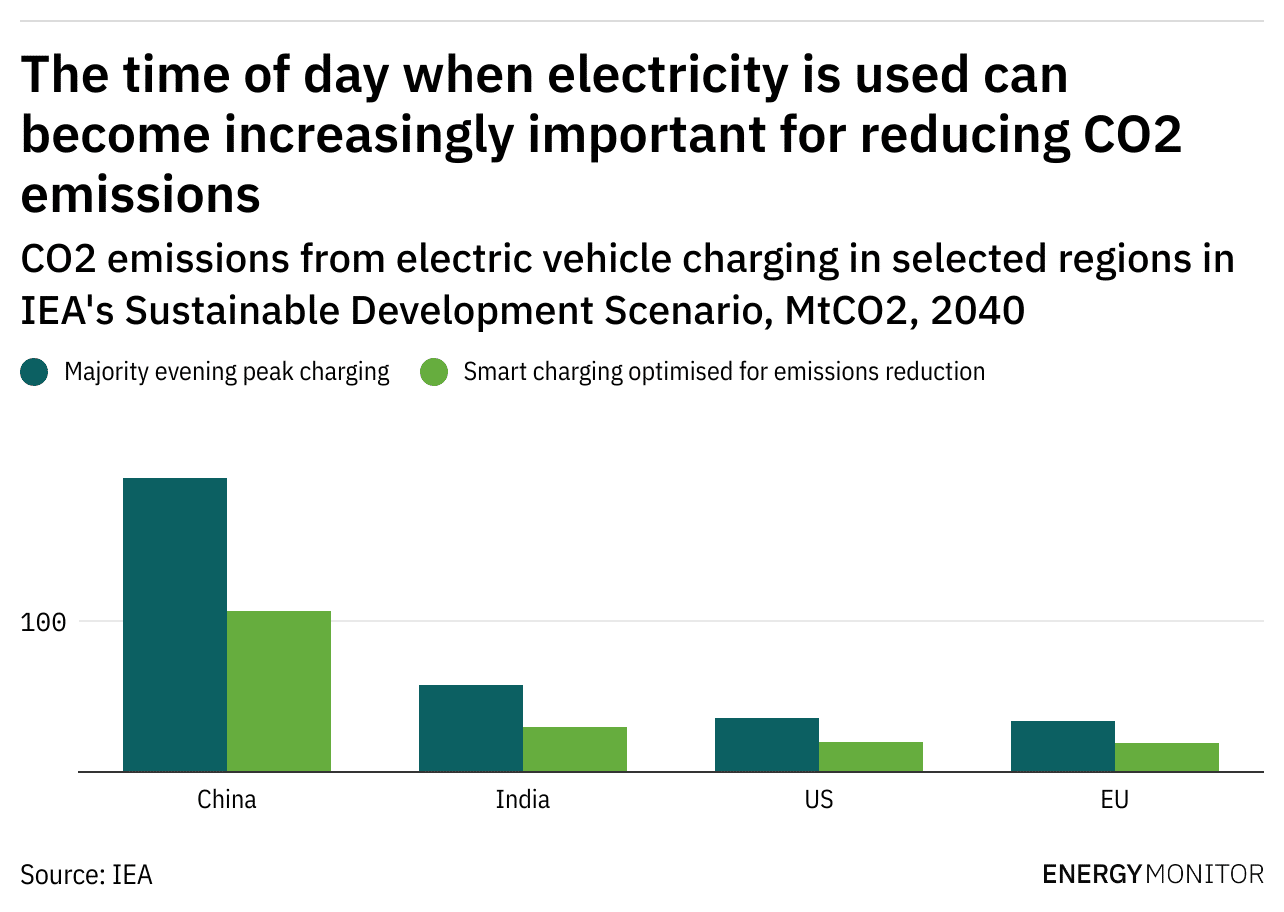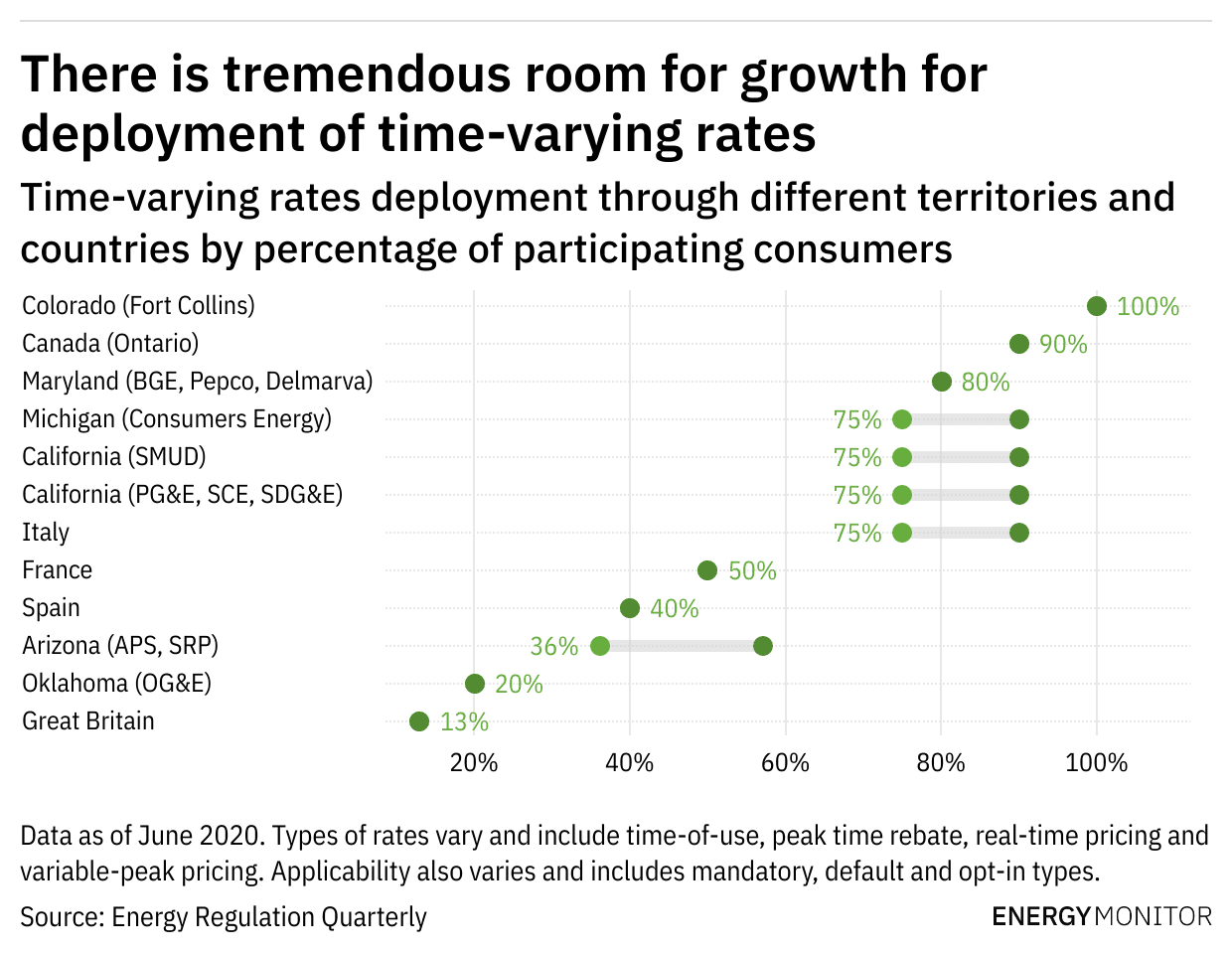One major challenge for decarbonisation is mobilising consumers to play a bigger role in the clean energy transition. As consumers turn to electric appliances, including electric vehicles (EVs) and heat pumps, there are increasing opportunities for them to contribute to grid flexibility at low cost. This flexibility is essential to support the integration of variable wind and solar resources into the power system.
Electricity pricing that varies by time of use is an important component of this vision: it can prompt customers to change how they use energy throughout the day – for example, by offering lower prices in hours when renewable energy is plentiful. It can also spur investment in resources such as distributed solar generation and distributed energy storage, where those resources are most needed. A study on time-of-use pricing implemented by one of California’s utilities showed substantial demand reduction during the part of the day when the costs (and emissions) were highest.
However, despite the promise of such flexible pricing, and some successful examples, few countries have implemented it comprehensively. It is therefore significant that China’s National Development and Reform Commission (NDRC) recently issued a policy requiring local governments to design and implement time-of-use electricity pricing for nearly all retail customers – industrial, commercial and residential.
The NDRC’s new policy builds on existing implementation of time-of-use tariffs for customers in certain provinces. It scales this up to provide a framework for national implementation. Specifically, it calls for three innovations: one, several price periods (on-peak, off-peak, “deep valley” and extreme peak) per locality; two, a substantial differential between peak and off-peak prices (ratios of at least 3:1 or 4:1, depending on local conditions); and three, a seasonal dimension; for example, reflecting the wet and dry season in regions with large amounts of hydroelectric generation.

Local efforts will be crucial
The NDRC’s policy recognises that time-of-use pricing needs to be tailored to local conditions. For example, a locality with ample solar generation capacity might offer a low electricity price at midday. In contrast, a region with strong night-time wind generation might implement the “valley” price at night. Indeed, the NDRC says: “Time-varying prices should reflect the power supply cost of the power system […] and guide power users to use less electricity during peak hours and more electricity during low [off-peak] hours, so as to ensure the safe and stable operation of the power system, improve the overall utilization efficiency of the system, and reduce the overall cost of electricity for society.”
It goes on to say its new pricing policy is essential to integrate renewables and meet China’s decarbonisation goals. While the NDRC and other Chinese government agencies have issued many policies in support of renewables over the years, this type of language is a significant and more recent development that emphasises grid flexibility, cost-reflective pricing and their link to renewables and decarbonisation.

The NDRC rightly leaves implementation to local policymakers but gives them a tight deadline: it expects localities to submit a report on their progress towards new pricing plans by the end of the year. This means local governments must quickly and accurately measure power system costs, assess how these vary throughout the day, and use that information to design effective electricity prices.
Local governments must quickly and accurately measure power system costs, assess how these vary throughout the day, and use that information to design effective electricity prices.
This will not be easy, given that many provincial and municipal governments have limited experience and capacity to collect information on power system costs and design rates that accurately reflect those costs. Although many have years of experience applying time-of-use pricing to certain subsets of customers, these have not always accurately reflected system costs. As a result, they have not given adequate price signals for end-users to modify their usage – that is, provide flexibility – at the right times and in the right amounts.
Local governments will have to scramble to develop capacity to design better and broader time-of-use pricing regimes. Meanwhile, the NDRC and its subsidiary the National Energy Administration will have a big job evaluating the quality of local efforts and pinpointing what improvements are needed.
Tariffs for net zero
Time-of-use pricing can be a significant contributor to China’s decarbonisation efforts, if implemented well. It is one piece of the puzzle for a clean energy transition in China. By making the demand side more flexible it can help unlock clean, cost-effective alternatives to coal power.
Time-of-use pricing is also a cost-effective way to help manage the current episode of power shortages in China. It is much cleaner and faster than building new fossil-fired power generation capacity to meet demand.
Such pricing will support beneficial electrification in the country. China has already emerged as a world leader in certain aspects of electrification, notably the uptake of EVs. This latest announcement from the NDRC underscores the potential for China to do much more with its power sector reforms to revamp the way that end-users interact with the grid and build an energy system fit for net zero.
A version of this article originally appeared in Energy Monitor.

